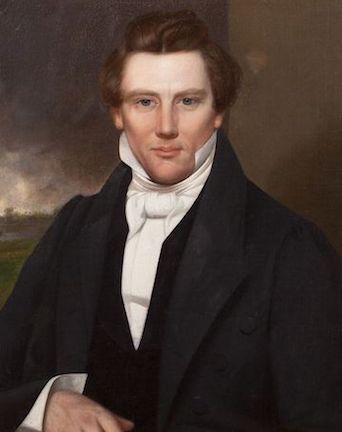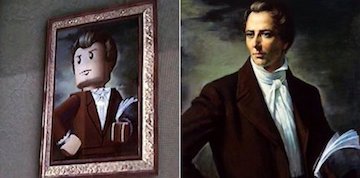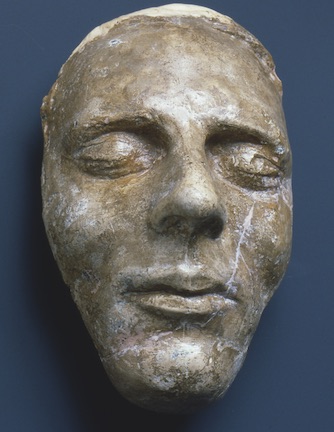Difference between revisions of "Images of Joseph Smith"
(→Was Joseph Smith ever photographed?) |
(→Was Joseph Smith ever photographed?) |
||
| Line 11: | Line 11: | ||
Joseph Smith arrived in Philadelphia in December 1939 after he had traveled to Washington, DC, to present before Congress the grievances of Latter-day Saints suffering in Missouri.[https://www.churchofjesuschrist.org/study/ensign/1993/05/news-of-the-church/site-of-joseph-smiths-1839-philadelphia-sermon-identified?lang=eng] He then organized a branch of the Church in Philadelphia on the 23rd and spoke to a congregation of about 3,000 people.[https://www.josephsmithpapers.org/place/philadelphia-pennsylvania] He presided over the first Philadelphia conference on January 13, 1840.[https://www.churchofjesuschrist.org/study/ensign/1993/05/news-of-the-church/site-of-joseph-smiths-1839-philadelphia-sermon-identified?lang=eng] Some researchers suggest Joseph Smith could have posed for a daguerreotype by budding daguerreotypist Robert Cornelius while in this large city for two months.[https://josephsmithjrphoto.blogspot.com/2011/05/daguerreotype-and-joseph-smith-jr.html] However, this entry in the History of the Church concludes that possible documentation of his activities at that time is unavailable: | Joseph Smith arrived in Philadelphia in December 1939 after he had traveled to Washington, DC, to present before Congress the grievances of Latter-day Saints suffering in Missouri.[https://www.churchofjesuschrist.org/study/ensign/1993/05/news-of-the-church/site-of-joseph-smiths-1839-philadelphia-sermon-identified?lang=eng] He then organized a branch of the Church in Philadelphia on the 23rd and spoke to a congregation of about 3,000 people.[https://www.josephsmithpapers.org/place/philadelphia-pennsylvania] He presided over the first Philadelphia conference on January 13, 1840.[https://www.churchofjesuschrist.org/study/ensign/1993/05/news-of-the-church/site-of-joseph-smiths-1839-philadelphia-sermon-identified?lang=eng] Some researchers suggest Joseph Smith could have posed for a daguerreotype by budding daguerreotypist Robert Cornelius while in this large city for two months.[https://josephsmithjrphoto.blogspot.com/2011/05/daguerreotype-and-joseph-smith-jr.html] However, this entry in the History of the Church concludes that possible documentation of his activities at that time is unavailable: | ||
| − | : The Prophet also assigned Dr. Foster the additional task of keeping an accurate record of his perceptions of the mission. When the mission ended on 4 March 1840, the Prophet wrote in disappointment, “I depended on Dr. Foster to keep my daily journal during this journey, but he has failed | + | : The Prophet also assigned Dr. Foster the additional task of keeping an accurate record of his perceptions of the mission. When the mission ended on 4 March 1840, the Prophet wrote in disappointment, “I depended on Dr. Foster to keep my daily journal during this journey, but he has failed me” (History of the Church, 4:89). |
In August 1844 a traveling daguerreotypist took a miniature of [[Wilford Woodruff]] in Nauvoo, which he mentioned in his journal.[https://www.churchofjesuschrist.org/church/news/rare-original-photo-of-wilford-woodruff-discovered-on-ebay?lang=eng] An advertisement ran in the ''Nauvoo Neighbor'', which said, “L. R. Foster, is now prepared to take Likenesses, by the Daguerreotype process, in the most beautiful style of the art, either plain or coloured, at his Daguerreotype Rooms, on Main Street.”[https://www.churchofjesuschrist.org/church/news/rare-original-photo-of-wilford-woodruff-discovered-on-ebay?lang=eng] | In August 1844 a traveling daguerreotypist took a miniature of [[Wilford Woodruff]] in Nauvoo, which he mentioned in his journal.[https://www.churchofjesuschrist.org/church/news/rare-original-photo-of-wilford-woodruff-discovered-on-ebay?lang=eng] An advertisement ran in the ''Nauvoo Neighbor'', which said, “L. R. Foster, is now prepared to take Likenesses, by the Daguerreotype process, in the most beautiful style of the art, either plain or coloured, at his Daguerreotype Rooms, on Main Street.”[https://www.churchofjesuschrist.org/church/news/rare-original-photo-of-wilford-woodruff-discovered-on-ebay?lang=eng] | ||
Revision as of 08:28, 5 April 2021
Anyone living in this digital age who is curious about what the Prophet Joseph Smith looked like can get on a computer or other device and find several possibilities.
Lifelong members of The Church of Jesus Christ of Latter-day Saints have seen his likeness in artwork, lesson manuals, Church magazines, scholarly publications, and on the shelves of their meetinghouse library. Which ones are accurate?
Contents
Was Joseph Smith ever photographed?
The short answer is, possibly, no. No daguerreotype has been authenticated.
First, here’s a simplified review of what technology was available in Joseph Smith’s lifetime. Louis Daguerre of France introduced the daguerreotype process worldwide in 1839. This was the first commercially viable process that produced clear results and only required a few minutes of exposure in the camera. Previously, photograms produced by Thomas Wedgwood and Humphry Davy were faint and it was difficult to fix the images or capture them permanently. The work of Nicephore Niepce in the mid-1820s produced crude images.[1] Daguerreotype images were typically only about 2 by 3 inches and could only be duplicated by being re-photographed.
Joseph Smith arrived in Philadelphia in December 1939 after he had traveled to Washington, DC, to present before Congress the grievances of Latter-day Saints suffering in Missouri.[2] He then organized a branch of the Church in Philadelphia on the 23rd and spoke to a congregation of about 3,000 people.[3] He presided over the first Philadelphia conference on January 13, 1840.[4] Some researchers suggest Joseph Smith could have posed for a daguerreotype by budding daguerreotypist Robert Cornelius while in this large city for two months.[5] However, this entry in the History of the Church concludes that possible documentation of his activities at that time is unavailable:
- The Prophet also assigned Dr. Foster the additional task of keeping an accurate record of his perceptions of the mission. When the mission ended on 4 March 1840, the Prophet wrote in disappointment, “I depended on Dr. Foster to keep my daily journal during this journey, but he has failed me” (History of the Church, 4:89).
In August 1844 a traveling daguerreotypist took a miniature of Wilford Woodruff in Nauvoo, which he mentioned in his journal.[6] An advertisement ran in the Nauvoo Neighbor, which said, “L. R. Foster, is now prepared to take Likenesses, by the Daguerreotype process, in the most beautiful style of the art, either plain or coloured, at his Daguerreotype Rooms, on Main Street.”[7]
Lucian R. Foster arrived in Nauvoo on April 27, 1844, and met Joseph two days later, as recorded in Joseph’s journal.[8] [9] Foster had served as a conference clerk and branch president in New York City, where he was living by December 1840. Joseph did not mention sitting for a daguerreotype in his journal, but did he allow Foster to photograph him?
Lewis Ramsey completed a painting of Joseph Smith in 1910 that Joseph Smith III (Joseph Smith’s son who became first president of the Reorganized Church of Jesus Christ of Latter Day Saints) did not approve of. He had been given a cut of the painting and an article in the Salt Lake Tribune that announced Ramsey’s portrait and indicated that there were no authentic pictures of the Prophet in existence. So Joseph Smith III responded to the article by writing a letter to the Salt Lake Tribune. He wrote, “If your artist, Mr. Ramsey, should ever visit the capitol of Iowa, he will find a duplicate oil painting of Joseph Smith in one of the halls, placed there by myself and my son, at the request of Mr. Charles Aldredge, then curator of the historical society.”[10] He also mentioned that there was an authentic oil painting that his son Frederick M. Smith possessed that was painted by the same artist. “It fortunately happens to us that this portrait, painted in 1843, is sustained in its characteristic likeness to my father by the daguerreotype in our possession, taken the same year, I think, by an artist by the name of Lucian Foster.”[11] To show that Ramsey’s painting was not true to his father’s likeness, Smith enclosed a photograph, or daguerreotype, taken of the oil painting he spoke of. If there is a daguerreotype of Joseph Smith taken by Lucian Foster, where is it?
One scholar shares the interesting stories of Dr. Mark Brockbank and photographers Charles W. Carter and W. B. Carson related to a possible original daguerreotype. Carter and Carson each copyrighted a photograph of Joseph Smith taken from an original daguerreotype taken in Nauvoo. (See McCarl, "The Visual Image of Joseph Smith"[12])
Did Joseph Smith ever sit for a portrait?
The short answer is, yes. There is a painting of Joseph Smith in possession of the Community of Christ (originally the Reorganized Church of Jesus Christ of Latter Day Saints) that hung in the auditorium in Independence, Missouri, which is the portrait Joseph Smith III referred to in his 1910 letter to the Salt Lake Tribune. The Deseret News writes that David Rogers, an experienced portrait painter, painted the portrait of Joseph (and one of Emma) over the course of several days in September 1842.[13] [14]
The Sutcliffe Maudsley print
Joseph Smith recorded in his journal, June 25, 1842, that he sat for a drawing of his profile to be placed on a lithograph of the map of the city of Nauvoo.[15] It was engraved by Mr. G. Pelton.[16] This figure is more caricature-like because Joseph is represented as short and overweight, yet he is described by contemporaries as tall. Also, his journal states that he “sat” for the portrait, but the completed figure is standing. The final figure could represent Joseph’s bust only and the body could have been adjusted to fit the dimensions of the map.[17]
Maudsley completed other profiles of Joseph—one is a watercolor of him with Hyrum standing behind him, both leaning on canes. Another is probably a copy of a David Rogers profile.
Other images
Profiles of Joseph and Hyrum by David Rogers in 1842 are with the Church Historian’s offices in Salt Lake City.
John McGahey created a lithograph of Joseph Smith preaching to the American Indians.[18] Many others used his lithograph to create engraved copies. The work of Maudsley, as well as that of Frederick Piercy (who drew and engraved images of Joseph Smith but never met him), were also copied freely.[19]
In the decades since his martyrdom, many artists—having never met the Prophet—have created images of him using the death mask, descriptions of him, and any other information about him, often infusing their own interpretation or perception of him in their work.
LDS Living noted in September 2016, that a Lego version of a famous Joseph Smith painting (by Alvin Gittins and owned by the Church), was placed in the background of the Lego Pirates of the Caribbean game.[20]
The Scannel daguerreotype
A new daguerreotype began circulating in 1994 and caused much interest. The image, however, surfaced in 1965 in Independence, Missouri. A woman by the name of Katherine Scannel donated it to the Reorganized Church because she believed it was an old picture of Joseph Smith. She claimed to be a distant relative. Author and researcher S. Michael Tracy wrote a book about it, saying “Of all the different images, this is the only one that matches forensically with what we know of Joseph Smith’s anatomy.”[21] He and his forensics team were able to compare the photo with Joseph’s death mask and with photos when Joseph’s skull was exhumed in the 1920s. Phrenology was popular in Joseph Smith’s lifetime and Tracy said his head was measured by phrenologists in Philadelphia in 1840.[22]
In 1994, Community of Christ archivist Ron Romig said “How does it compare with other images of Joseph Smith? Sixteen individualized points are quite close, making it between 85 and 90 percent sure the daguerreotype is of Joseph Smith.” But he added that it is still a subject of controversy.
- Romig said a researcher in the university's department of biomedical visualization is using information from the daguerreotype, death masks, other images as well as the Joseph Smith's skull, which is in the possession of the RLDS Church, to generate, via computer, a three-dimensional image of the Prophet.[23]
Neither the Community of Christ nor The Church of Jesus Christ of Latter-day Saints has authenticated the image.[24]
The death mask
It was common practice during the time of the Prophet’s martyrdom to preserve the facial features of a departed loved one by greasing the face so that Plaster of Paris could be used to create a mold that would not adhere to the face when dry. The mold could be used to create other models of the person’s face, however, the mold is usually destroyed getting the death mask out.[25]
- In the late morning on June 28, 1844, the bodies of Joseph Smith Jr. and his brother Hyrum arrived in Nauvoo, Illinois. They were taken to George Cannon, father of subsequent Church leader George Q. Cannon and a furniture maker by trade who doubled as the local undertaker since he made coffins as well as cabinets. With the help of a few others, he washed the bodies and prepared them for their families to view in only a few hours.
- Hyrum’s face, black with bruising, had a hole on its left side from a .54 caliber bullet and with the hot, humid June atmosphere, both bodies likely began to swell and deteriorate even as they were prepared for the death mask impressions and burial.[26]
It is believed, according to the Church News, that the masks never belonged to the Smith family. Instead, George Cannon had them until his death in 1844. William Rowley then obtained them, and sold them in 1849 to Philo Dibble, a close friend of Joseph’s. He exhibited them for a time, then sold them to an artist named James Brown. Brown’s family sold the masks to Wilford C. Wood. Upon his passing, they were part of his collection that were donated to the Church in 1990 by his daughters. They are on permanent display in the Museum of Church History and Art.
- Many artists have referred to the death masks to more accurately portray Joseph and Hyrum Smith in sculptures and paintings. This might not be entirely accurate, however.
- The masks do reflect what Joseph and Hyrum looked like, [Sam Weston, a docent at the Church History Museum] said, “but they look like the day after they died.”
- Having visited Carthage once on June 27th, he reported it was 104 degrees F with 99% humidity. “The distortion of these bodies in that 24-hour period should be considered; especially since they died violently. …. So they’re probably a close representation but I hate to say this is what Hyrum and Joseph looked like.”[27]
The Church History Museum owns a second set, called the Pedestal masks, that belonged to John Taylor. However, their origin is unclear.[28]
Parley P. Pratt’s description of Joseph Smith
Several people who knew or met Joseph Smith have commented in some way on his physical appearance and characteristics. Apostle Parley P. Pratt offers one of the most expressive.
- President Joseph Smith was in person tall and well built, strong and active; of light complexion, light hair, blue eyes, very little beard, and of an expression peculiar to himself, on which the eye naturally rested with interest, and was never weary of beholding. His countenance was ever mild, affable, beaming with intelligence and benevolence; mingled with a look of interest and an unconscious smile, or cheerfulness, and entirely free from all restraint or affectation of gravity; and there was something connected with the serene and steady penetrating glance of his eye, as if he would penetrate the deepest abyss of the human heart, gaze into eternity, penetrate the heaven and comprehend all worlds.
- He possessed a noble boldness and independence of character; his manner was easy and familiar; his rebuke terrible as the lion; his benevolence unbounded as the ocean; his intelligence universal, and his language abounding in original eloquence peculiar to himself—not polished—not studied—not smoothed and softened by education and refined by art; but flowing forth in its own native simplicity, and profusely abounding in variety of subject and manner. He interested and edified, while, at the same time, he amused and entertained his audience; and none listened to him who were ever weary with his discourse. I have even known him to retain a congregation of willing and anxious listeners for many hours together, in the midst of cold or sunshine, rain or wind, while they were laughing at one moment and weeping the next. Even his bitter enemies were generally overcome, if he could once get their ears. . . .
- In short, in him the character of a Daniel and a Cyrus were wonderfully blended. The gifts, wisdom and devotion of a Daniel were united with the boldness, courage, temperance, perseverance and generosity of a Cyrus. And had he been spared a martyr’s fate till mature manhood and age, he was certainly endowed with powers and abilities to have revolutionized the world in many respects, and to have transmitted to posterity a name associated with more brilliant and glorious acts than has yet fallen to the lot of mortal.[1]
Emma’s thoughts
Emma is reported to have said of Joseph, “No painting of him could catch his expression, for his countenance was always changing to match his thoughts and feelings.”[29] [2]
Conclusion
Two images of Joseph Smith were created in the years before his death by two men who knew him: David Rogers and Sutcliffe Maudsley. Both are credited with talent, so the likeness they each produced may look like Joseph. There were many images of Joseph created that are reproductions of those two images. Numerous modern images have been created, many attempting to use the death mask or historical accounts of his physical description to create his likeness. It is unknown whether or not Joseph Smith ever had a daguerreotype taken of him.
New daguerreotypes come to the internet now and then, with the accompanying questions of the possibility each is of Joseph Smith. Seth Adam Smith provides a good conclusion to the hunt for an original image of Joseph Smith: “Frankly, what Joseph Smith looked like does not matter when it comes to gaining a personal testimony of the Prophet. . . . Clearly, the physical appearance of prophets, apostles (and the Savior Himself) are of little importance when compared to the overwhelming need for each of us to gain our own spiritual witness of their callings.”[30]



